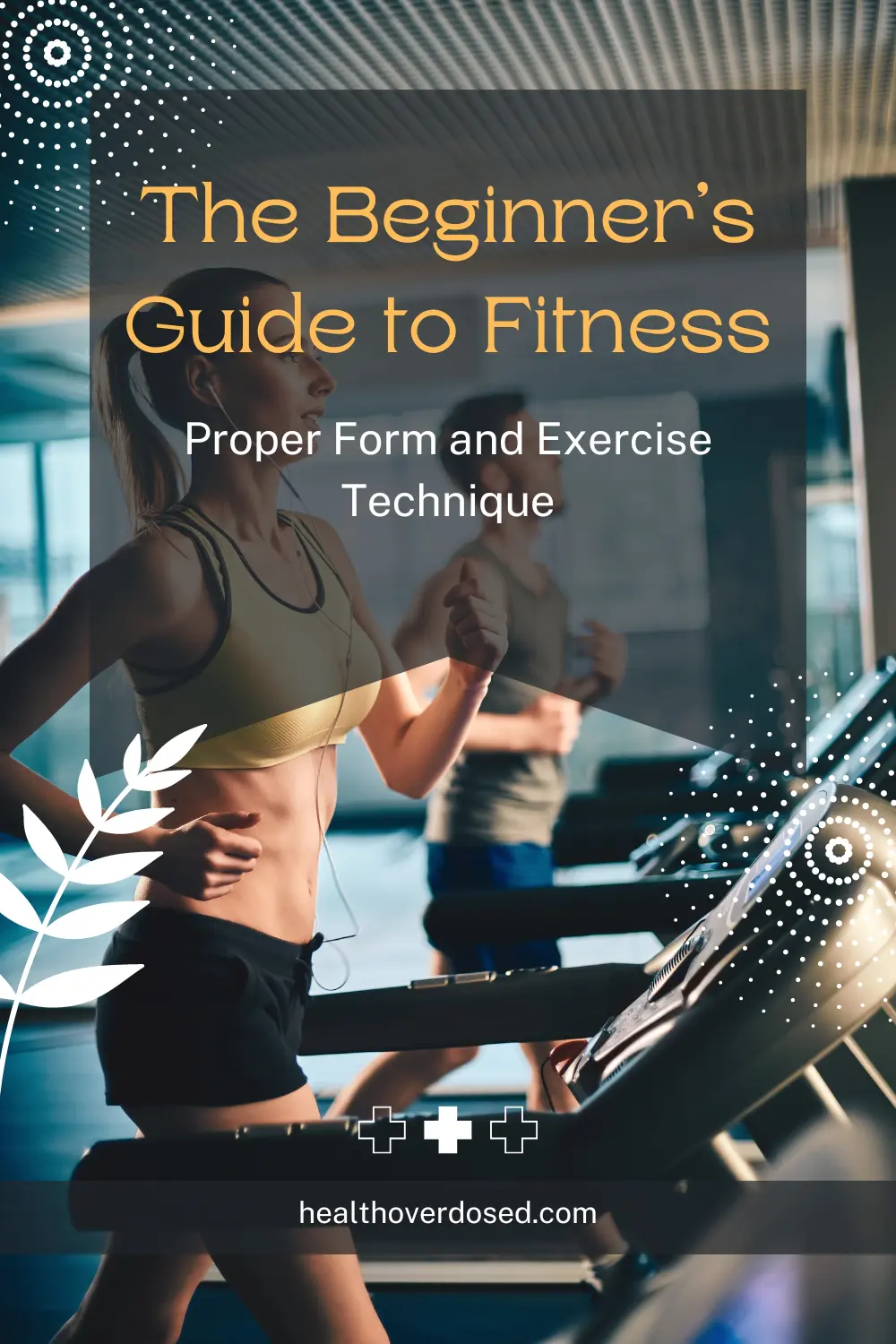The Beginner’s Guide to Fitness: Proper Form and Exercise Technique
The most dangerous thing that can happen to a trainee with or without experience is undoubtedly injury.

There are a number of videos on the internet showing the catastrophic failures of exercisers and how one injury can derail an entire life. Research shows that the main cause of various injuries is incorrect execution techniques. If you don’t learn to perform the form and technique well, you set yourself up for a number of problems: strain, torn ligaments, tendons or muscles, hemorrhages, spinal injuries, joint injuries, etc.
Now, let’s see how we can improve our form and technique:
1. Training and self-study
One of the most important qualities for any fitness beginner must be curiosity. The beginning is the best time to adapt your body. I recommend using the many free resources on the internet on how to perform an exercise. I’m opening a bracket here – you have to be careful which people you look at. On the internet, just as there are people with good techniques, there are also many others who decide to become famous online to show off.
The other option you have is to hire a fitness instructor. If you’ve decided to go down this route, I’d recommend checking out my previous thread where I looked at the pros and cons of fitness instructors and what to look for when choosing your personal trainer.
2. Video analysis
If you have the opportunity, take pictures of yourself during training and analyze your videos. Try to get such an angle that you can observe the main points of the exercise and watch for your mistakes. For example, with a bench press, the most common mistake is not having an arch and the path of the bar is in a straight line, not in a slight upward curve. That’s why when you shoot a bench press, you have to clearly see how you position your body in space and where the lever is going.
When squatting, the most common mistake is rounding the lower back, which is mainly caused by pelvic rotation. Watch if the pelvis moves or if the back is straight and always tight during the performance, watch how deep you squat. Another option for analysis is if you are in the company of friends, have them observe your training and assess whether you are performing the exercise correctly. Of course, observers must have knowledge and experience, as there are certain specifics.
We were recently at the gym with friends and one of them asked me, “Why is that guy in the distance squatting with a wide leg when it’s not right?” Actually, the reality is this – how you squat depends on your anatomy. Research shows that women have a greater ratio of posterior to anterior thigh strength (the posterior thigh includes the muscles: Biceps Femoris, Semimembranosus, and Semitendinosus, and the anterior consists of the Quadriceps (Rectus Femoris, Vastus Lateralis, Vastus Medialis, Vastus Intermedius), Sartorius and Iliopsoas).
The way you position your feet in space can vary. People with weak hamstrings are more stable if they adopt a wider squat stance. Therefore, it is very important to understand which form is acceptable and which should not be performed. These are just sample features and errors that can occur during practice and it is important to watch from the sidelines if possible.
3. Acquaintance and practice
When you want to perform an exercise on a new machine, try a new technique, etc. The most important thing in the beginning is not to rush into the so-called “deep waters” and not to start with a lot of weight. Start with lightweight and more repetitions, focus on form, and look to correct any incorrect movements you are doing. It is important to adapt your nervous system to the exercise. Research has shown that the chance of getting muscle soreness after changing a training plan increases more, compared to a constant training system.
I recommend you to be patient and practice. Many professional trainers and triathletes are of the opinion that if you want to get good at benching, you have to bench. The constant repetition of the exercise will help not only your body to adapt, but also to become stronger.
4. Listen to your body
Your body has mechanisms that will indicate a problem through pain or other means. Don’t ignore these signals, but consider them as a possibility of wrong technique or overload. I mentioned how leg placement when squatting can vary depending on anatomy. The easiest way to find out how to squat optimally is to take a barbell without weights on your back and try different positions. This position where you don’t feel pain, you don’t lose your balance and you can do a nice deep squat is the most optimal for you.
Many people who have experienced muscle tears or other types of trauma report that they often feel pain before the incident. If you feel a sharp pain during an exercise, it is best to stop the workout. If you have intense pain that does not go away after 1 or 2 minutes, it is best to leave the gym and rest.
It is important to remember that fitness is a long-term process, similar to a marathon, and success is measured not so much in the speed with which you cover the first 300 meters, but in the consistency and regulation of each meter. Take 1-2 days off to recover rather than risk an injury that could put you off training indefinitely.
References
“Freitas, TT, Calleja-González, J., Carlos-Vivas, J., Marín-Cascales, E., & Alcaraz, PE (2021). Short-term effects of strength training using elastic bands versus weight machines in microvascular endothelial function and muscle soreness perception: A crossover trial. published in: European Journal of Applied Physiology”“Kruszewski, M., Kruszewski, M., Krupowicz, A., & Twardowski, P. (2018). Influence of snatch technique on the occurrence of shoulder pain in weightlifting. International published in: Journal of Sports Physical Therapy”
“Liu, Y., Schlüssel, MM, Souza, RB, Bazyler, C., Sato, K., & Stone, MH (2021). Technique variations and injury occurrence in the squat, bench press, and deadlift. published in: Journal of Strength and Conditioning Research”
“Mayberry, J., Patterson, P., Briggs, C., & Jones, IC (2019). Differences in pelvic morphology between the high and low hip flexion squat positions. Journal of Applied Biomechanics”
“Kong PW and Burns SF (2010) Bilateral difference in hamstrings to quadriceps ratio in healthy males and females. Journal: Physical Therapy in Sport”



